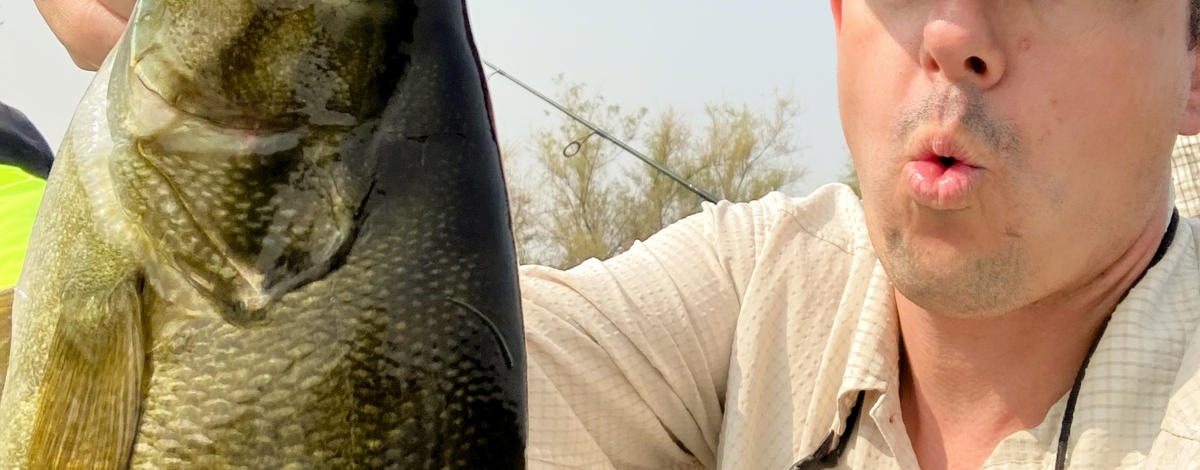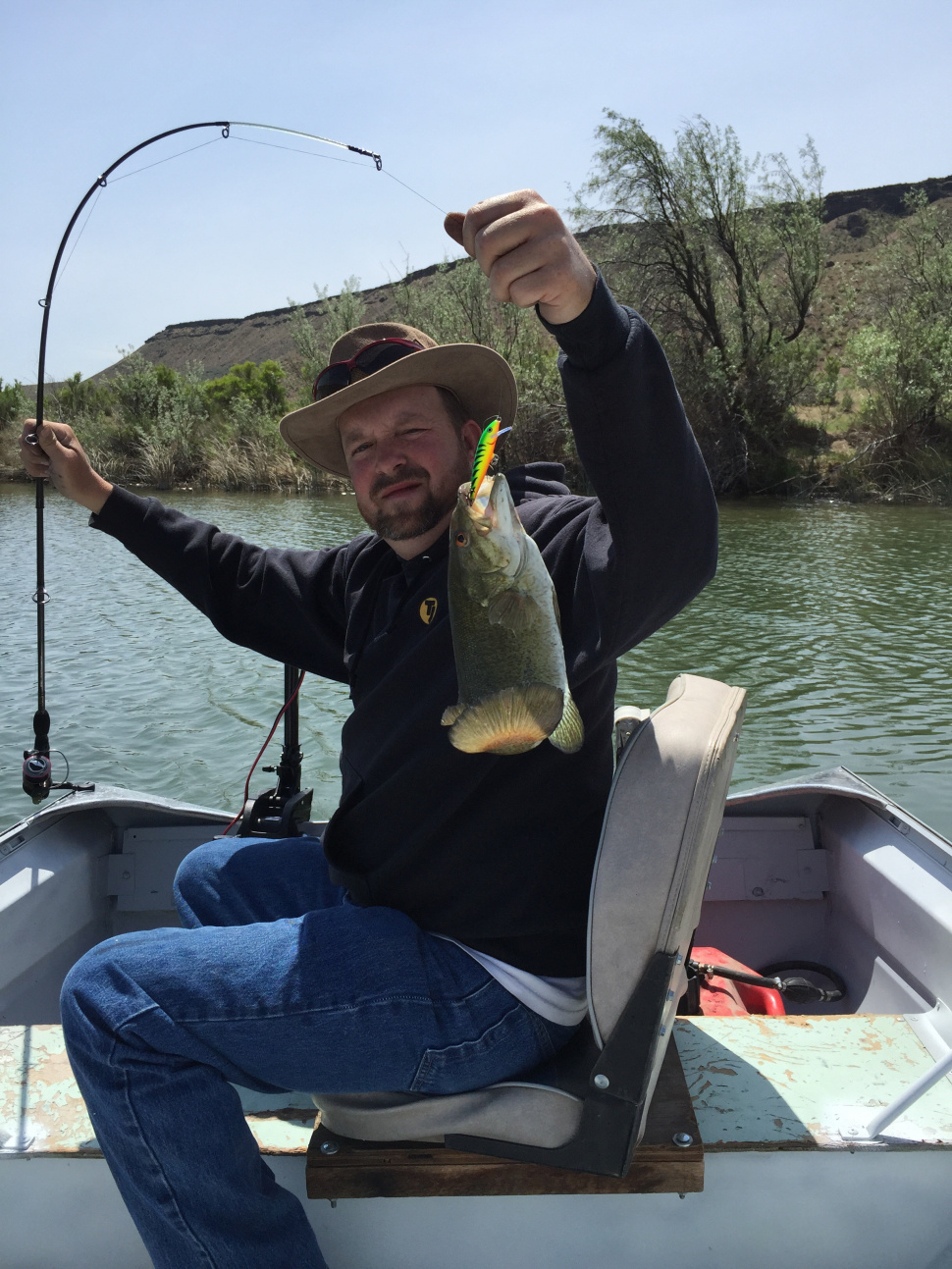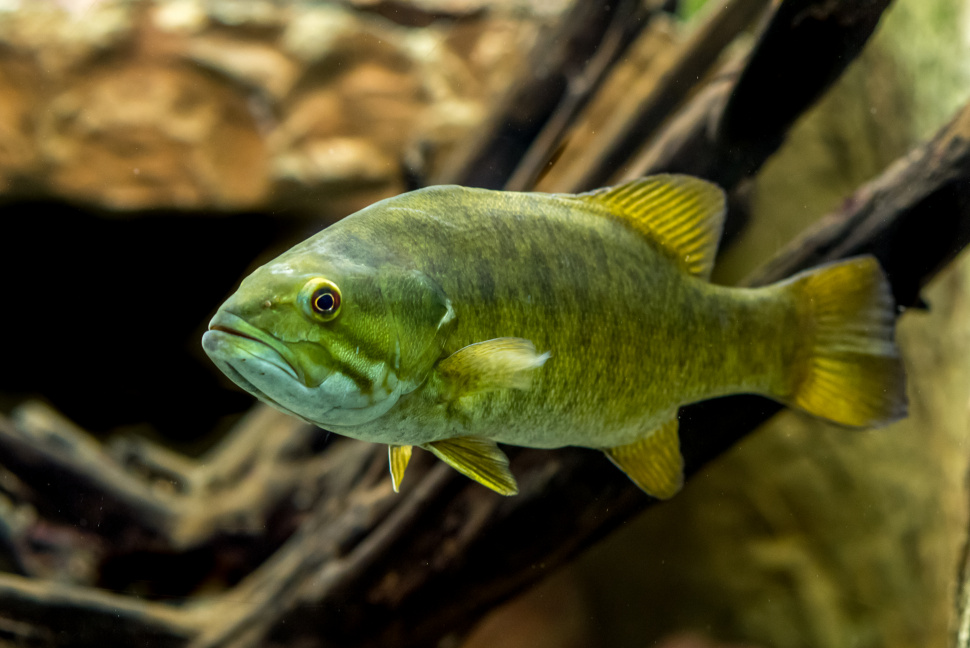During spring, the local weatherman stands before a green screen, strategically circling portions of the state with high and low pressure systems. Predicting spring weather in Idaho can be all over the map. While it might be weeks before most anglers wait for those warm, sunny days to pack coolers and slather on sunscreen, there is a group of die-hards who anxiously await these unpredictable April days: We’re looking at you, hardcore bass anglers.
The reason anglers go after bass during these next few weeks is simple: That’s when the big, trophy-size bass are swimming up from the deeper pools to spawn in shallower water. Warmer temperatures mean more active bass. Imagine just how fun waking up at 4 a.m. to go for a jog in January sounds and you get the point.
While both largemouth and smallmouth bass can be targeted most of the year, the first few weeks of April — as water temperatures begin to rise — mark the most exciting time to target trophy bass. And, no, you don’t need to be a bass tournament pro to get in on the hunt, either.
All it takes is a little understanding of a bass’s habitat, their spawning cycle, water temperature dynamics and directions to a nearby fishery. Put it all together and you got a recipe for one heck of a weekend fishing for America’s most popular game fish.

Rick Peodtke with his catch/release record smallmouth bass from May 2018, Pend Oreille River.
A pain in the bass
Bass can be tricky. While found across most of the state, the opportunity to track them down during this pivotal season in early April is often easier in theory than in reality. Understanding their habitat and the type of waterbody they inhabit is key to honing in on either small or largemouth bass.
Smallmouths tend to lurk in cooler waters, such as the Snake River and cooler lakes with deeper water and less vegetation. Largemouth, on the other hand, tend to be found in warmer, shallower bodies of water where rocks and vegetation provide ample coverage from overhead sun and predators. Think of that local pond or reservoir with fallen trees, rock crevices, cattails, over-hanging willows, cottonwoods, lily pads, etc.
Generally speaking, if you can see the structure above the water, or just below the surface, then it’s more likely largemouth territory. And if it’s too deep to tell or too cold to wade and find out, then you might be in smallmouth country.
As water temperatures slowly begin their spring and summer climb, it’s worth noting that the window of opportunity to find these big fish is only open for a few weeks, sometimes less depending on the rate at which the temperatures rise and how, let’s just say efficient, the bass are at spawning.
“At around 60 degrees, bass are full-on spawning,” says Martin Koenig, Fish and Game’s Sportfish Program Coordinator. “At that point, they are already thinking about digging their nests and depositing their eggs, which means that bass are very catchable in the mid-50 degree range.”
Bodies of water warm up differently based on their size and location. Shallower water warms quicker than deeper water. That kiddie pool in your backyard is going to be a lot warmer (a lot quicker) than water flowing out the base of Arrowrock Dam, for instance. So monitoring the ongoing temperatures of whichever body of water you plan on fishing is key. Keep a thermometer handy inside your tackle box when you go out. In many bass fisheries in the southern part of the state (more on fishing destinations later), that clock is already counting down.
Check the weather
Spring fishing can be hit and miss, but it’s usually best when the weather is stable. Bass will come into shallow waters as weather warms, and will stay there if conditions remain good. Spring cold fronts can interrupt this migration, when bass often turn back to deeper water. Anglers will have better luck fishing on bright, sunny days when the fish are more active. Cloudy or rainy days often push bass back down to their wintering levels, making the bite less predictable.
Boat or bank angler?
Normally the only way to target those big, deep-water bass during the year is by boat and some form of technology that monitors water depth. Shore anglers are usually pretty limited to how deep they can target fish since casting line out from dry land only gets you so far.
During much of the year, those larger bass (especially smallmouth) are down deep or hanging on offshore structure, making them tough for shore anglers to reach. However, as the temperatures rise during April and into the first week of May, the playing field sort of levels out for anglers of both varieties.
Pre-spawn bass will be ascending from the deeper pockets of a lake or reservoir onto shallow gravelly flats. This is when shore anglers have a better chance to reach them with a jig or bait, and fancy sonar isn’t necessary.
Full-on spawn
“It may just be three weeks out of the year, but the bigger smallmouth are going to be the ones ready to spawn,” says Martin Koenig. “Those mature 15-19 inchers are seeking out the sandier, gravelly shallows to carve out little divots in the bottom and deposit their eggs in those spots.”
Males will usually show up first to prep the nests in hopes of attracting a female. Once the work of digging the nests is done, females will show up (if the males’ handiwork is up to snuff) and deposit their eggs.
The females don’t stick around much longer after that, though. The males, on the other hand, will hang around to guard the nests and ward off any predators, such as bluegill or perch, which might see the eggs or newly-hatched bass fry as an easy meal. Males also work to keep the eggs oxygenated by fanning them.
“But seeking out the spawning beds is just an indicator,” Koenig suggests. “Finding those transition zones in the water level, somewhere between the warm shallows and spots just below, is where you want to be targeting them.”
A Lesson from Oxbow Reservoir
Oxbow Reservoir, the 581-acre stretch of water along the lower Snake River, is a perfect example of how water temperature determines where bass are on their life cycle.
Oxbow’s long and shallow water corridor, essentially a bloated section of the Snake River, doesn’t provide many opportunities for deep sections of water that a larger lake might have. Water flowing into Oxbow from the base of Brownlee Dam is especially cold, roughly 55 degrees during early April. With colder water coming in, bass might be pre-spawn in the upper end of the reservoir.
Mid-way down, where the water temperatures have warmed to around 60 degrees, bass will have already moved on to the heart of the spawn, hugging those shallows closer to the bank to dig nests and lay eggs.
Near the lower end of the reservoir, the bass may have finished spawning and are already back in the deeper portions of the reservoir.
And the cool thing is: All of these behaviors and stages in the spawn can be witnessed on a single day. Where your fishing spot falls on the temperature scale will determine what part of the bass life cycle is happening there.
As seen in the Oxbow Reservoir example, there are many factors that drive water temperatures to fluctuate. It goes without saying that lakes at higher elevations take longer to warm up. For example, the higher elevation upper Snake River flowing into American Falls Reservoir is going to take a lot longer to reach those optimal 55-65 degree water temperatures than, say, C.J. Strike Reservoir in the southwest corner of the state, despite being on the same river system.
Anglers should be thinking about this when considering where to target big bass this April. Expect the bite to be earlier where the waters warm soonest. And that brings us to our final point.
Where to fish for bass around the state
There are dozens of fisheries all across the state that hold decent populations of largemouth bass and smallmouth bass (and in a few cases, both). Depending on the region, consistent weather patterns and a preference on which type of bass you’re going for, here is a list of some of the best bass fishing spots around Idaho.
LARGEMOUTH BASS
Shallower, warmer waters. Look for 5-10 feet of water, with flooded habitat, tree stumps, cover and vegetation.
- Lake Lowell
- Crane Falls Reservoir
- Cove Arm Reservoir
- Glendale Reservoir
- Ben Ross Reservoir
- Weston Reservoir
- Mann Lake
- Mann Creek Reservoir
- And community ponds
SMALLMOUTH BASS
Smallmouth habitat is harder to recognize and might be deep below the surface. In the spring, look for rocky shorelines with boulders, dams, dikes, cliffs, etc. Anything that breaks the river current is a good bet.
- Brownlee Reservoir
- Cascade Reservoir
- Anderson Ranch Reservoir
- Dworshak Reservoir
- Milner Reservoir
- Lake Walcott
- Foster Reservoir
- Salmon Falls Creek Reservoir
- Lower Snake River
BOTH SMALLMOUTH & LARGEMOUTH
Diverse bodies of water that have both deep, cooler pools and warm shallows along the bank can give anglers a good chance for targeting both smallmouth and largemouth bass.
Fish low and slow
Every day of fishing is a little different and every fish is a little different, but there’s common traits that will help you catch bass during April. They’re still a little sluggish, so they aren’t typically going to chase a fast-retrieved lure or bait.
That also means you might not get the savage strike for which bass are famous. It might feel as subtle as dragging your lure across a blade of grass, or a gentle, steady pull. Since they’re spawning, or getting ready to spawn, they’re likely going to be close to the bottom, so that’s where you want to fish.





